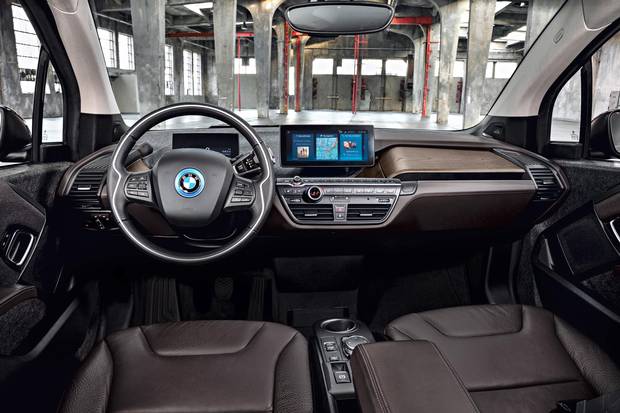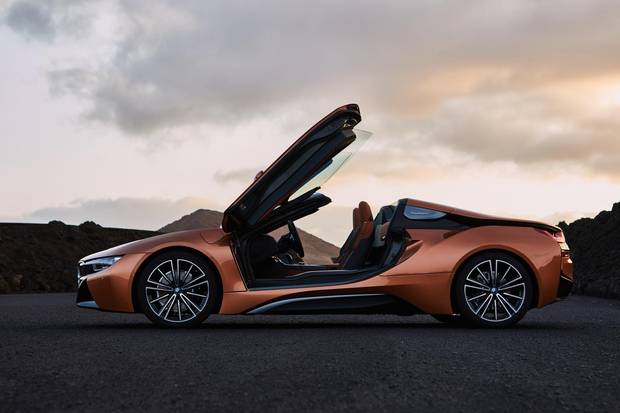Think ahead 10 years. Will the phrase "Do I have to charge my BMW" be heard as often as you might hear "Do I have to charge my iPhone" now?
Probably not. While BMW has pledged to offer 25 electrified models – 12 pure electric and 13 plug-in hybrids – for BMW, Mini and Rolls-Royce by 2025, electricity won't be overtaking fossil fuels any time soon.
"As we see it today, no, it will not be a full replacement," said Robert Irlinger, head of the German-based car maker's i division. "We think in about 2025, between 15 to 25 per cent of our whole volumes will be electrified – full electric or plug-in hybrids – so 75 per cent will remain combustion engines."
Irlinger was at the Los Angeles Auto Show, where other companies repeated similar pledges. For instance, Volkswagen has promised to have a pure electric or hybrid version of every model in its lineup by 2030. Honda plans to electrify two-thirds of its worldwide lineup by 2030.
"There are two main reasons. One: Consumer demand is growing," Irlinger said. "Second: We need a higher degree of electrification within our portfolio to fulfill [fuel-efficiency] regulations."
Since 2014, BMW's i division has offered two electric cars designed from scratch: the i3 city car and the $150,000 i8 plug-in hybrid supercar.

BMW i3s.
BMW
At the L.A. show, the company revealed its first big update to the i8 – the addition of a convertible version, the i8 Roadster. The non-convertible i8 becomes the i8 Coupe.
The Roadster keeps the gull-wing doors but replaces the plus-two back seat with a fabric top that opens or closes in about 15 seconds.
Both new i8s put out 17 more horsepower – for 374 hp total – than the first i8. Pure electric range is up 16 kilometres to 53. The price has not been announced.
BMW also showed its i Vision Dynamics, a four-door, pure-electric concept that BMW says has a 600-km range and will go zero to 100 kilometres an hour in 4.0 seconds.
It's greener in L.A.
It's easy to get a rosy-version of a green future at the L.A. show, where the focus is on green cars. And even there, seven of BMW's 10 concept cars and new releases were gas-powered, including its new 453-hp M3 CS.
The same was true for other major companies – except Tesla – at the show. While the green cars were prominently placed, the focus was still on gas-powered sedans, sports cars and SUVS.
The auto data site GoodCarBadCar doesn't have Canadian numbers, but said sales of BMW Group's electric and plug-in hybrid electric accounted for 5.2 per cent of total BMW brand sales in the United States – a growing number of that is iPerformance hybrids that are not the i8 or i3, including the BMW 530e plug-in hybrid.

BMW i8 Roadster and Coupe.
bmw
The company said it will sell 100,000 electrified vehicles around the world this year alone.
BMW also plans to integrate every drivetrain – pure-electric, combustion and plug-in hybrid – into every model series by 2020. You'll be able to choose whether you want an e-car or not.
"Our customers will be able to take their model with just the combustion or they can order it with a full battery-electric system," BMW board member Klaus Froehlich said.
The electric future hasn't come as quickly as some had hoped. Germany's government had to abandon its goal of having one million electric cars on the road by 2020. Today, there are just 37,000 on German roads.
Not like normal cars?
What's holding us back from pure electric? Well, there are definitely well-known hurdles like range anxiety and the current lack of charging infrastructure outside major cities. Irlinger said there's hope for both – better battery technology and increased private and government involvement in infrastructure. Not everyone agrees.
"I'm all for electrifying the fleet – all roads lead to electric," Dennis DesRosiers, president of DesRosiers Automotive Consultants, told CBC News last year. "It's just that the road is probably 30, 40 years out until we get to a reasonable market share, and that's a science issue. We need to develop these vehicles to make them more acceptable."
And are consumers being scared away from electric cars because, typically, they haven't looked, or driven, like normal cars? Instead, they have often looked like quirky concept cars – or home appliances. Or the other extreme, for BMW, the supercar.

i3s interior.
BMW
For example, in both design and performance, the i8 is about as far as you can get from the i3 (even though the i3 got less boxy looks in an update this year). It's a stunning car that looks better as a convertible.
Irlinger said consumers are learning that they don't have to give up looks or performance if they choose electricity. While consumers have more trust in hybrids, Irlinger expects that to extend to pure electric cars as battery technology and infrastructure improves.
"In the beginning, people tend to demand cars like normal cars." Irlinger said. "This [i Vision Dynamics] is something like the future of the 4 Series car – it goes 209 [km/h] – definitely there is no problem between electro-mobility and performance."
The writer was a guest of the auto maker. Content was not subject to approval.
Shopping for a new car? Check out the new Globe Drive Build and Price Tool to see the latest discounts, rebates and rates on new cars, trucks and SUVs. Click here to get your price.
